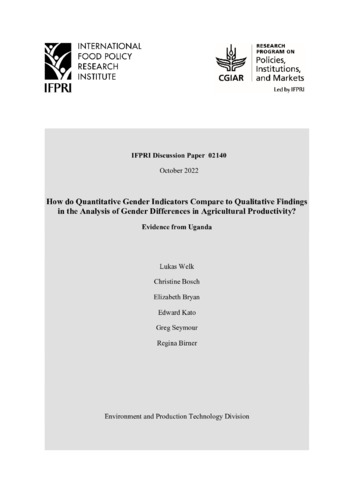How do quantitative gender indicators compare to qualitative findings in the analysis of gender differences in agricultural productivity? Evidence from Uganda
Abstract
In sub-Saharan Africa, female-managed plots often show a significant gap in productivity compared to men's plots. To examine these differences, a variable to determine who in the household controls agricultural plots is needed. There is variability in the ways in which gendered control over agricultural plots is defined and measured across studies. Many studies show that an in-depth analysis of intra-household relationships is necessary, as this is often a major unexplained factor in productivity differences. To contribute to filling this methodological gap, we estimate the productivity gap among male and female farmers in Uganda using three different identification approaches and conduct complementary qualitative research to investigate the underlying causes of these differences. The three approaches to define control over plots are: (1) gender of the plot manager, (2) gender of the main plot-level decision-maker and (3) on gender of decision-maker over income from the sale of crops. Results show significantly different gender productivity gaps of 16% (1), 43% (2) and 60% (3). Qualitative results confirm the variability in the way that households defined plot management, including multiple ways in which decisions are made or activities are distributed within households on jointly managed plots. Mixed-method research designs and improved gender variables for econometric models can contribute to a better understanding of gender productivity differences and better policy making aiming to reduce gender inequalities.

